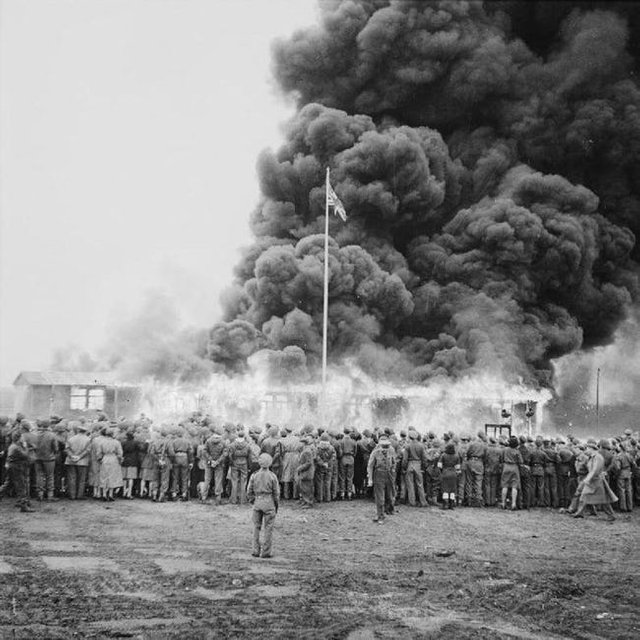The Famous Photo That Captured The Moment The Holocaust Was Finally Over
What began as a German prisoner of war camp quickly grew into one of the most gruesome and notorious landmarks of Hitler's genocidal Nazi regime, which found its stride in the chaos of WWII. Perhaps best known for being the place where Anne Frank died, Bergen-Belson has gone down in history as being among the most deplorable of all the German concentration camps; there, thousands of people died due to a lack of food and severely unsanitary living conditions. It's little wonder, then, that Bergen-Belson's liberation was a day like few others – especially for those Holocaust survivors who were finally free.
Even after Bergen-Belson was liberated on April 15, 1945, those who had once been prisoners continued to die at alarming rates due to the legacy of disease they had inherited during their internment. For many at the Bergen-Belson concentration camp, liberation meant finally receiving a place in a shallow mass grave. For others, those who were lucky, it meant being treated for the desperately contagious diseases from which they were suffering. But that didn't mean there were no celebrations or joy to mark the end of the concentration camps.
The world watched alongside the survivors of Bergen-Belson as every last hut on the compound was burned to the ground as a way to honor the lives that had been destroyed within their walls.
The Burning Of The Last Hut Was A Cathartic Burn

By early 1945, the population of Bergen-Belson – which had originally been designed to house no more than 10,000 people – had flooded to over 60,000 prisoners, the majority of whom were left without food or shelter. By the time the British army arrived to liberate the camp in the middle of April – a mere four months after the influx of prisoners had arrived – over 35,000 people had already died of starvation and disease, including Anne Frank.
Because the dead had been left to pile up instead of being placed underground in graves, diseases such as typhus were able to spread throughout the camp. Even after the British arrived to provide aid to the newly liberated prisoners, people continued to die at a rate of nearly 500 people a day due to the suffering they had endured and the diseases they had contracted.
In an attempt to cull the spread of typhus and other diseases, British soldiers evacuated and burned down every last hut that had been used to house the prisoners. In many cases, crowds gathered to watch their and their family's sufferings burn in effigy.
This photo captures that cathartic burn.